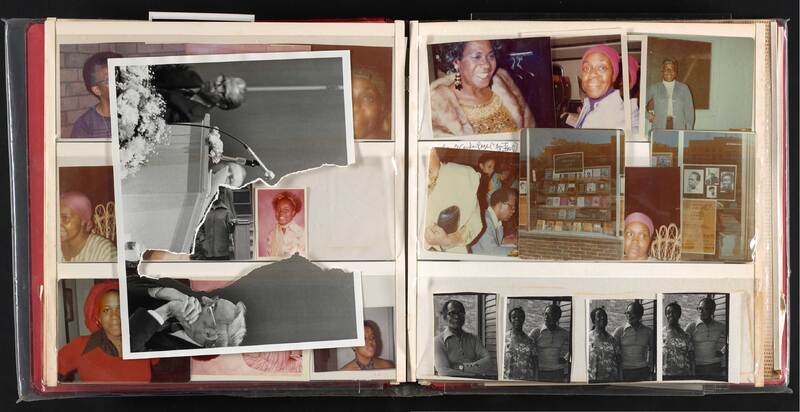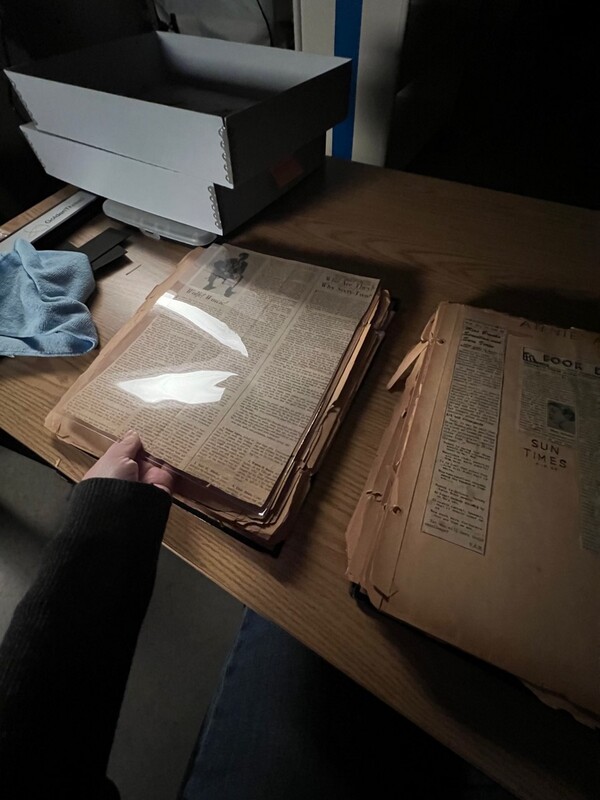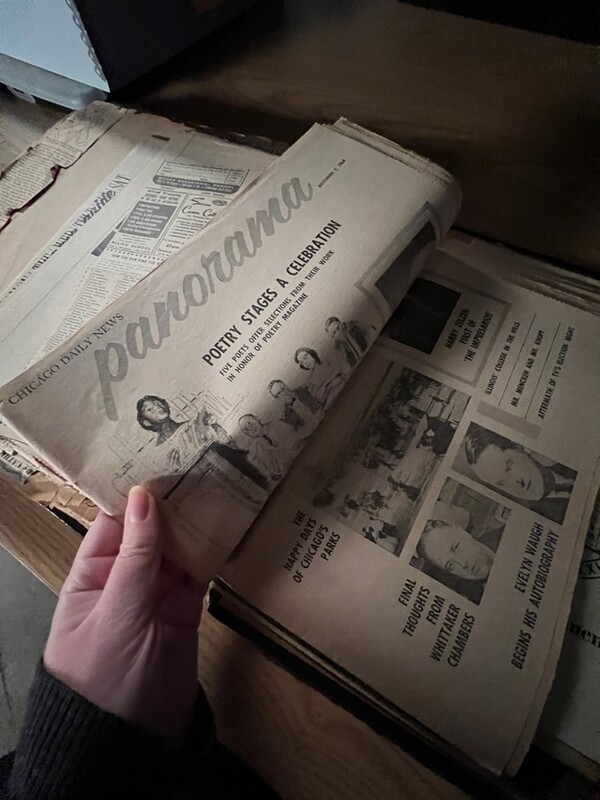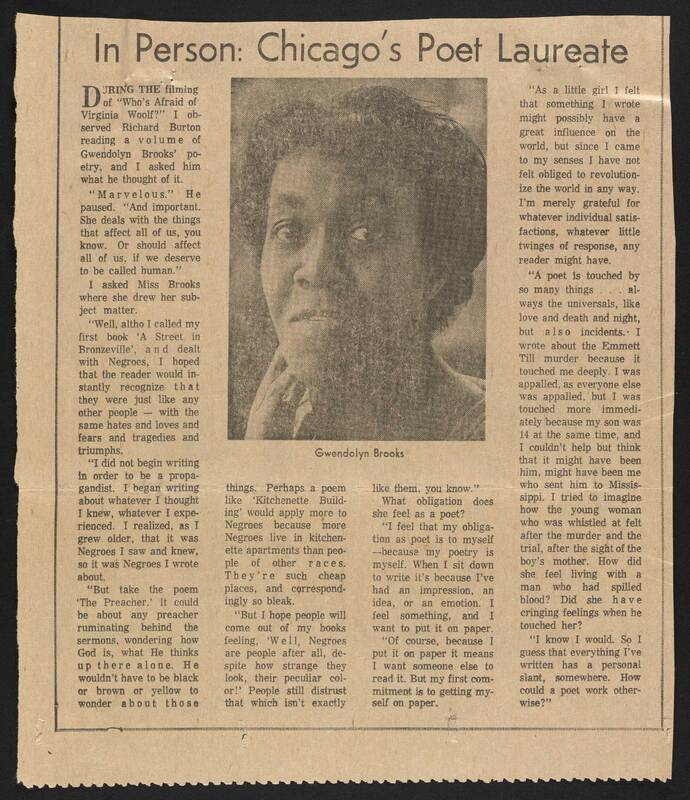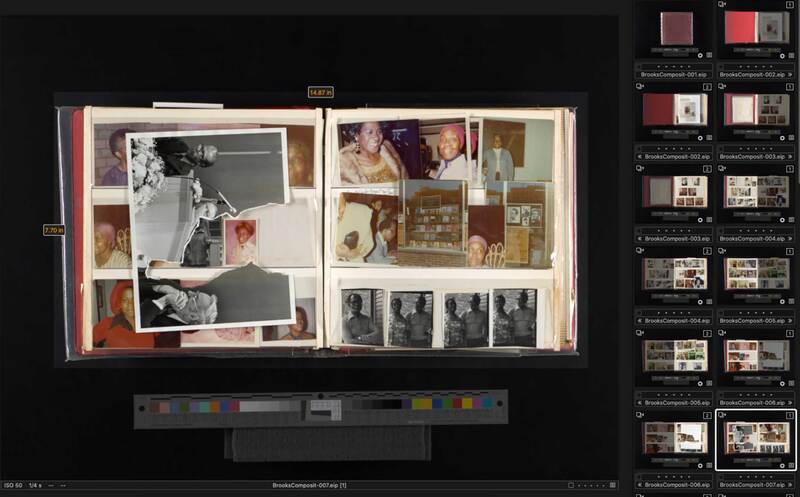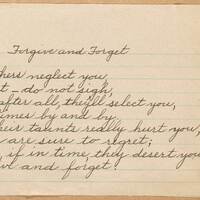Digitizing Brooks' Legacy
It is an honor to handle and photograph the Gwendolyn Brooks collection with the Rare Book & Manuscript Library. Digitization has been a slow but rewarding process. During digitization we focus intently on care and handling to ensure the objects do not endure damage. Personal papers are intimate objects, and it is with reverence we physically handle them. The items Gwendolyn Brooks saved give us glimpses into her life in a way that is emotionally resonant and gives us an opportunity to learn more about her life story.
Technical Process
We are using a copy stand with a PhaseOne IQ280 medium format camera back and either a 72mm Schneider lens or a 120mm Schneider lens, depending on the materials. The light source is a Profoto Strobe or a Kaiser light table with stand and camera holders. We use various software including Capture One v.11 Cultural Heritage software, Microsoft Excel, and Jira. As various sizes and mediums are nestled together within this collection, it has been necessary to maintain the order by shooting placeholders as a digital reference. This helps when we circle back and reshoot these materials that differ in format or size. Reference images for inserted materials have been helpful. Some items will undergo conservation treatment prior to digitization these were quickly captured to reference later for maintaining archival arrangement digitally.
|
|
Album and Scrapbook Digitization
The first materials we digitized were the Red Album and Black Scrapbook. The Digital Imaging Specialist found great joy in reading some of Brooks’s early poems included in the black scrapbook, from age 13 onward. Physical materials in this project dictate the digitization set-up (including the camera heights and tools used). The content differs in size from very small objects to large letter-size items. Materials were digitized at three heights, optimizing their image resolution. A helpful early step we took was to digitize page spreads for later reference, as the materials could shift from their original order, specifically in the Red Album.
Transmissive Digitization
New formats in this collection presented an opportunity to learn. The boxes of photographs contained formats such as prints, reproductions, and various types of film. While we have digitized nitrate negatives, glass plates, daguerreotypes, color slides and other photographic mediums, we had never used our transmissive set-up to digitize color negatives. The complexities of color negative mediums offer exciting challenges. Balancing the color in these photo reproductions with the film's intended colors, due to the film's aesthetic and age, was required. Dan Green, the Media Preservation Graduate Assistant, has experience in color negative digitization and consulted in the process. We retained the raw files so in the future more detailed work with color science is possible.
Working with Metadata
Photographing variable size materials in the same collection requires preserving their archival arrangement. The page spread view of the scrapbook and album helped ensure proper file naming and order. The metadata was used to identify and name items during digitization. The Digital Imaging Specialist was included in discussions about visual representation which clarified how the metadata was structured and how to name image files.
